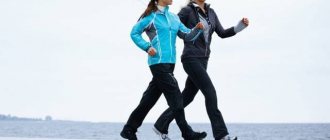About lymphedema
Lymphedema is a swelling condition that can develop in the legs after lymph nodes are removed or injured. Lymph nodes are small, bean-shaped structures that are located throughout the body. They drain fluid away from different areas of your body. The inability to drain fluid leads to tissue swelling.
During surgery, lymph nodes in your pelvis were removed to get rid of any remaining cancer cells. This increases the risk of developing leg lymphedema. The risk will be higher if you have had radiation therapy or had lymph nodes removed in your groin. If you only have lymph nodes in your pelvis removed, you may be less likely to develop leg lymphedema.
Lymphedema may develop immediately after surgery or years later.
to come back to the beginning
Treatment Options
The easiest way to help with a bruise is cold.
It is better to apply a wet cloth rather than ice to reduce the risk of a negative skin reaction to the effect. If you only have frozen items on hand, you should wrap them in a cloth or towel. Exposure to cold will not only reduce swelling, but also reduce the severity of pain. It is advisable to apply compresses every 2 hours, the duration of exposure is 5–10 minutes. It is not recommended to leave it for a long time, as negative reactions from the skin and blood vessels are possible.
Two types of ointments help speed up recovery: based on leech extract - SinyakOff, and with substances that correct microcirculation - Troxerutin. It is enough to apply them to the problem area 2 times a day for a noticeable effect. They improve blood circulation, which causes swelling to resolve faster.
A bruise may make it difficult for a person to move the injured part of the body. It is recommended to apply a bandage made of an elastic bandage in order to disturb the injured area less. The fixation should be tight, but not compress tissues and organs.
Read also: Leg pain: causes and treatment
Risk factors for developing leg lymphedema
Risk factors for developing leg lymphedema include:
- weight gain or excess weight;
- infection of the affected leg;
- radiotherapy of the pelvic area;
- reappearance of cancer.
There are other factors that are thought to increase this risk. These include:
- Sedentary lifestyle.
- Flying on an airplane.
- Compression of the leg. It occurs when there is a tight ring of pressure in one area of the leg and is often caused by wearing certain clothing.
- Exposure to extreme temperatures.
to come back to the beginning
How to reduce your risk of developing lymphedema
It is impossible to predict which patients will develop lymphedema, but there are preventive measures to reduce the risk of its occurrence.
Protect your skin
One of the measures to reduce the risk of developing lymphedema is to protect the skin as much as possible from injury or infection. This is because the affected area begins to receive cells that fight the infection, which in turn causes swelling. Your legs may simply not be able to handle the removal of this extra fluid.
Treat cuts and scrapes
- Wash the area with soap and water.
- Apply first aid ointment to it.
- Place a clean, dry gauze pad or Band-Aid® over the top.
Treat burns
- Wrap an ice pack in a towel and apply to the burn for 15 minutes. You can also wash the burn with cold water.
- Wash the area with soap and water.
- Apply first aid ointment to it.
- Place a clean, dry gauze pad or bandage on top.
Watch for symptoms of infection, which include:
- redness;
- edema;
- heating of surrounding tissues;
- sensitivity.
Call your doctor or nurse if you have these symptoms.
Don't wear tight clothes
Avoid wearing tight clothing that leaves deep marks on your legs, such as socks or sweatpants with elastic cuffs. Wear loose-fitting clothing that does not leave marks on your legs.
Compression garments, which prevent severe swelling from occurring, work differently. It ensures uniform pressure on the leg and proper fluid flow through it. You can learn more about compression stockings in the Compression Stockings section of this resource.
Avoid exposure to extreme temperatures
Extreme heat and cold can cause fluid to accumulate in the leg and cause swelling. Avoid or reduce time in hot baths or saunas.
Be careful when flying by plane
If you are at risk for lymphedema, air travel is associated with certain negative factors, including:
- Cabin pressure. The pressure in the cabin of an airplane is usually slightly less than the pressure on the ground. This causes the skin to stretch and fluid to accumulate in the legs.
- Sitting motionless for long periods of time. If you don't move for a long period of time, fluid can accumulate in your legs.
- Lifting and carrying luggage can cause muscle strain.
- Dehydration (when your body does not get the amount of water it needs).
Here are some tips to help reduce your risk of developing lymphedema:
- Buy a seat with sufficient legroom, such as a seat at the front of the cabin.
- Ask for help to carry, lift or remove luggage that is too heavy for you.
- Stand up and walk up and down the airplane aisle if possible.
- While sitting, do simple exercises with your feet and ankles. Exercise throughout the flight will help restore circulation and movement of lymphatic fluid. You can try the following exercises: Point your toes towards the ceiling and then lower them towards the floor.
- Make circular movements with your feet in one direction and then in the other.
Other ways to reduce risk
- Do not give injections (shots) or acupuncture into your affected leg(s).
- Do not use sharp pedicure tools. Use cuticle remover cream and file your nails instead of trimming them.
- Moisturize your skin frequently to avoid flaking and cracking.
- Keep the area between your toes clean and dry to prevent infections.
- Don't go barefoot.
- Make sure your shoes fit your feet to avoid blisters.
- Make sure your toe rings or ankle bracelets fit loosely.
- Try to sit cross-legged as little as possible.
- Choose a sunscreen with an SPF of at least 30 to protect your skin from sunburn.
- Try not to gain weight, as excess weight is one of the risk factors for developing lymphedema. If you are overweight, try to lose weight.
- Limit your salt intake. Its use can lead to swelling, which will put excess strain on the lymphatic system.
to come back to the beginning
Fitness for women. How to achieve thin and beautiful ankles?
There is a prejudice that the thickness of the ankles is determined by nature, so it cannot be changed. However, sometimes it’s not just a matter of wide bones, so physical exercise still cannot be written off. They will help not only make your ankles thinner and more graceful, but also tighten your legs as a whole - shins, calves.
Exercise No. 1. You should lean on the back of a chair or bedside table, approximately waist high. Alternately stand on your toes and fall on your heels. This is an extremely simple leg exercise that can be done anywhere. Nothing is required except your own body weight.
Exercise No. 2. Take the same starting position as in the first exercise. Standing on your toe, make circular movements with your heel. Alternate legs. The radius and amplitude should be gradually increased.
Exercises are simple and effective Photo: Depositphotos
Exercise No. 3. You need to lie on your back with your arms extended along your body, and raise your legs brought together up to a right angle with the body. Pull your socks out one at a time, then tilt the toe as far as possible toward you.
Two or three basic exercises are enough, which should be performed with equal frequency and regularity (a couple of times a week is enough). Each exercise should be done in 3-4 sets of 10-20 repetitions. Over time, the load can be increased.
Additionally, you can regularly jump rope . It is also useful for toning the legs, such as increasing the number of sets and repetitions using weights in the form of dumbbells or kettlebells.
It is worth noting that the ankles are often thick against the background of general obesity. In this case, it is not enough just to perform a set of exercises to pump them up. You need to monitor your diet in general, strive for total weight loss, and only then locally influence this part of the body with training.
Photo: Depositphotos
Sometimes ankles become swollen and swollen for other reasons, such as fatigue or ill-fitting shoes.
- If your legs are swollen after a long day, you need to lie down for at least 10 minutes, stretching your legs up and leaning them against the wall. A massage with an ice cube made from sage and chamomile will also help.
A simple method will help you understand that your ankles are large due to the fact that water is retained in them: press your finger on your ankle, and if a dent remains on the skin, then there is a high probability that fluid is retained in the body.
Swelling will also be reduced by minimizing salt and starch in the diet : it would be optimal to reduce the consumption of salt, as well as potatoes, corn, beets, and carrots.
Photo: Depositphotos
If you are just on the path to forming beautiful ankles, then choosing the right clothes will help hide the problem and visually make this part of the body slimmer. For example, a tapered edge of a skirt or trousers that cover exactly half of the ankle will help to visually narrow your ankles. It is better to choose boots with large and wide heels.
In general, you can achieve beautiful and slim ankles through a set of regular exercise and proper nutrition. And some tricks in choosing clothes will help hide this slight figure deficiency.
Tags: ankles, women's legs, exercise, leg exercises
How to recognize the first signs of lymphedema
After surgery, swelling occurs at the incision site (surgical suture) in all patients. This is normal and will subside a few weeks after surgery.
Swelling caused by lymphedema usually occurs in the lower leg(s). If left untreated, it can spread throughout the leg and all the way to the torso. At first, this swelling may appear and disappear. It may decrease as you lift your leg higher than your chest.
Other early symptoms may include a feeling of heaviness in your leg(s) or a feeling that clothes, socks or shoes are pressing in on you.
to come back to the beginning
Rules for performing exercises for the calf muscles
It is difficult to build up the muscles of the lower leg, but if this is not done, there will be no harmony between the hips and this part of the legs. It is recommended to combine exercises while sitting and standing, training every 2-3 days.
1). Perform exercises for the calf muscles with an extended amplitude, stretching and contracting the muscles and ligaments, avoiding pain.
2). Warm-up is the first point of a training session, so as not to get a sprain!
3). Both stretching and jumping are performed calmly and gently.
4). Weights will help increase muscle size, but the weight is added gradually and smoothly. In this case, there is no need to increase repetitions; perform 25 times per set.
5). It is useful to stop for 15-20 seconds to maintain a static position while performing the movement.
6). If you place your toes apart when lifting, you work on the inner side of the shin. If you spread your heels and connect your toes, the outer side is loaded. To work the back, place your feet parallel.
7). The weight of the weight is selected so that the last 2-3 times in the approach are performed with effort.
8). Alternate approaches with rest for 1.5 - 2 minutes.
Other Lymphedema Treatments
There are other treatments for lymphedema. Talk to your doctor or lymphedema therapist about which ones are right for you.
Other treatments for lymphedema include:
- Treatment of scars. Scarring from surgery can make it difficult for your body to eliminate fluid. Scar treatments help soften the area around the scar and make it less tight. It will help drain fluid from your legs.
- Improved posture.
- Using kinesiology tape for athletes.
to come back to the beginning
Make an appointment
To make an appointment with a lymphedema therapist, contact your healthcare provider. They will decide together which lymphedema therapy is right for you. Once your doctor has made a referral, you will be contacted to schedule an appointment. If you have any questions, call Rehabilitation Service at 212-639-7833.
Lymphedema therapy is provided at several Memorial Sloan Kettering locations. For more information, visit www.mskcc.org/cancer-care/diagnosis-treatment/symptom-management/rehabilitation/medicine-therapy.
To find a lymphedema therapist in your area, you can visit the following websites:
Klose Training
www.klosetraining.com
Norton School of Lymphatic Therapy
www.nortonschool.com
Academy of Lymphatic Studies
www.acols.com
Lymphatic Association of North America
www.clt-lana.org
to come back to the beginning









